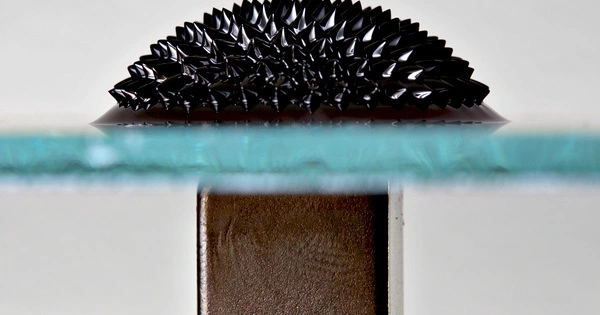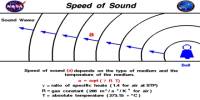A ferrofluid is a liquid that is attracted to a magnet’s poles. A colloidal liquid composed of nanoscale ferromagnetic or ferrimagnetic particles suspended in a carrier fluid (typically an organic solvent or water). It is a one-of-a-kind liquid composed of tiny magnetic particles suspended in a carrier fluid, typically an oil. To prevent clumping, each magnetic particle is thoroughly coated with a surfactant. Ferrofluid particles are typically made of iron or iron oxide and are extremely small, typically on the nanoscale.
Because of the presence of magnetic particles, ferrofluids have fascinating properties. When a ferrofluid is exposed to a magnetic field, the particles become magnetized and align with the field, resulting in intricate patterns and shapes. This is known as magnetorheological behavior, which means that an external magnetic field can control the fluid’s viscosity and flow characteristics.
When exposed to strong magnetic fields, large ferromagnetic particles can be ripped out of the homogeneous colloidal mixture, forming a separate clump of magnetic dust. The magnetic attraction of tiny nanoparticles is weak enough that the Van der Waals force of the surfactant is sufficient to prevent magnetic clumping or agglomeration. Because ferrofluids do not typically retain magnetization in the absence of an externally applied field, they are frequently classified as “superparamagnets” rather than ferromagnets.
Ferrofluids were first developed by NASA in the 1960s as a solution to the problem of liquid fuel management in zero gravity. Since then, they have found various applications in scientific research, engineering, and industry. Some common uses of ferrofluids include:
- Sealing and damping: Ferrofluids can be used to create dynamic seals and dampers in various mechanical systems. When a magnetic field is applied, the fluid forms a seal that prevents the leakage of gases or liquids. It is particularly useful in applications where traditional seals would be impractical or ineffective.
- Loudspeakers: Ferrofluids are employed in some high-quality loudspeakers to cool the voice coils and improve heat dissipation. The fluid surrounds the coil and transfers heat away from it, preventing damage and improving the speaker’s overall performance.
- Scientific research: Ferrofluids are extensively used in scientific research to study fluid dynamics, magnetism, and nanotechnology. Their unique properties make them valuable in areas such as microfluidics, lab-on-a-chip devices, and biomedical applications.
- Display technologies: Ferrofluids have been incorporated into display technologies to create visually striking effects. They can be used in novelty items, art installations, and interactive displays where the fluid’s response to magnetic fields produces captivating patterns and movements.
It should be noted that ferrofluids are usually toxic and should be handled with caution. Ingestion or direct contact with the skin can be harmful. If you want to experiment with ferrofluids, you should take proper safety precautions and seek advice from reputable sources.
















